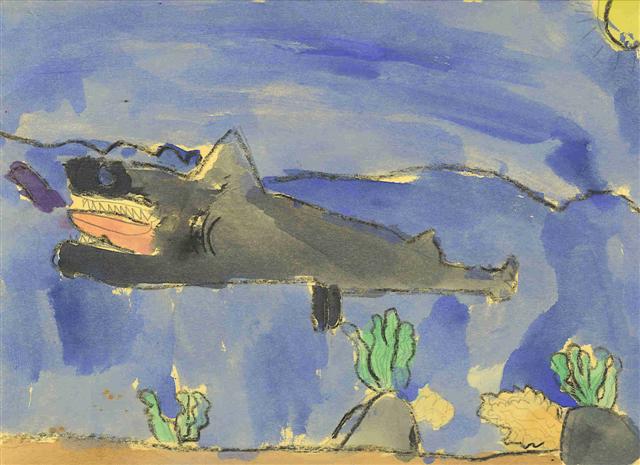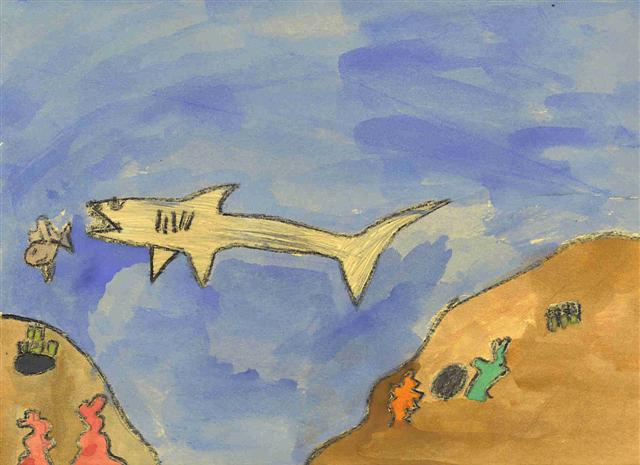|
During our study of sharks, students
read many non-fiction books, watched various videos, and
utilized many interesting web pages about sharks. Each student
chose a shark to research, wrote a report, and illustrated the
report utilizing different art media. (Due to district benchmark
testing and Christmas program practice, time was limited for
students to engage in a more elaborate project.) Through their
research, students learned how sharks keep our oceans clean by
eating garbage and how they keep other fish from overpopulating
the oceans.
Below are some of our
illustrations and written reports. Please visit our web
site to more of our class work.
Page 1
Page 2
We used
these resources for our research.
Sand Sharks
by: Savannah
Did you know sand sharks have
denticals on their skin? Sand sharks eat other sharks. The live
in the Pacific Ocean because it is warm there. Sand sharks are a
little bit bigger than actual knives. Their sense of smell and
eyesight are super good. Sand sharks are always hungry.

Thresher Sharks
by: Allen
Did you know the largest Thresher
shark is over eighteen feet long? Thresher sharks eat birds and
fish and can swim around the world. Thresher sharks can feel
vibrations from prey. They are as big as a boat and as fast as a
tiger shark. They have very good hearing and they can feel
vibrations to catch their prey.

Tiger Sharks
by: Ryan
Do you know why Tiger sharks are
called Tiger sharks? It is because they have stripes on them
like a tiger. Tiger sharks will eat other sharks and many other
things. They swim fast. Tiger sharks have a dorsal fin because
if they didnít they would flip over. We have to always watch out
for Tiger sharks.

Hammerhead Sharks
by: Raven
Did you know Hammerhead sharks
close there eyes when they bite into prey? They have two dorsal
fins. Hammerhead sharks attack humans. They can see far away
because they have great eyesight. Some hammerhead sharks are as
gray as fog. Hammerhead sharks move their head from side to side
so they can pick up smells. Always be very nice to sharks.

TEKS covered by this project:
LA 2.12 A. TLW identify relevant questions
for inquiry.
D. TLW use multiple sources to locate
information that addresses the questions.
G. TLW demonstrate learning through
displays
H. TLW draw conclusions from information
gathered.
LA 2.20 C. TLW take simple notes form
relevant sources
D. TLW compile notes into reports.
Science 2.9 A.TLW identify the external
characteristics of different kinds of animals that allow their
needs to be met.
B. TLW compare and give examples of the
ways living organisms depend on each other and on their
environments. |
![]() Information
Information
![]() Materials
Materials
![]() Blog
Blog
![]() Wiki
Wiki
![]() Showcase
Showcase
![]()
![]() Guestbook
Guestbook![]() Contact Us
Contact Us![]() Home
Home ![]()
![]() Information
Information
![]() Materials
Materials
![]() Blog
Blog
![]() Wiki
Wiki
![]() Showcase
Showcase
![]()
![]() Guestbook
Guestbook![]() Contact Us
Contact Us![]() Home
Home ![]()